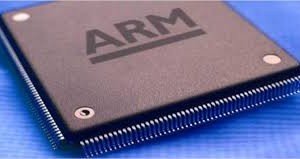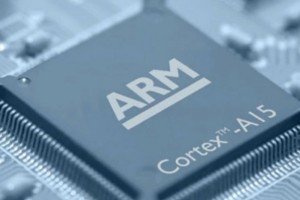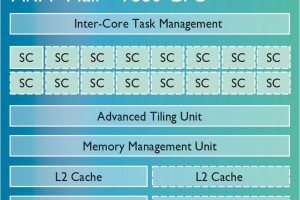The company has seven publicly announced 64-bit architectural licensees: Applied Micro, Broadcom, Cavium, Apple, Huawei, Nvidia, AMD and Samsung. It also has another seven publicly announced 32-bit architectural licensees, of which five – Marvell, Microsoft, Qualcomm, Intel and Faraday – do not have a 64-bit licence.
It would be fair to assume that the new architectural licensee is one of the 32-bit licensees upgrading to a 64-bit licence.
Asked if the new architectural licensee announced today was Intel, ARM EVP Pete Hutton replied “No”.
All that is revealed is that the licensee wants the licence for mobile ICs. Beyond that, the licensee’s identity remains a mystery.
64-bit is growing nicely for ARM. “In Q1 Cortex v8 units were 20% of the total; we expect them to be 50% of the units by the end of the year,” says Hutton, “it’s a very fast deployment.” Four more v8 licences were signed in Q1 as well as the architectural licence.
For the first time, ARM recognised Physical IP royalty revenues from a finfet process. Asked whose, Hutton pointed to the official statement: “A leading edge FinFET manufacturing process.”
TSMC did not claim to have 16nm finfet revenues in its Q1 earnings report. All that Hutton would say is: “I have server boards in-house based on 16nm finfet ICs from HiSilicon, and I also have boards from other ARM server partners.”
The Physical IP side contributed $24 million in licence fees and $17.2 million in royalties in Q1. Two Physical IP licences were signed in Q1, including one for a Cortex-A53 processor implementation on a 28nm process
Asked about server IC revenues, Hutton said: “We expect to be 10-ish to 15-ish per cent of the market by 2019, now it’s only 2015. It’s ramping up on plan.”
Since Intel is now hiding its mobile losses for by reporting them as part of its computer group’s results, no one knows how much effect Intel’s contra-revenue programme is having on mobile IC designers. Asked about this, Hutton replies: “The total shipments are largely ARM-based.”
Asked if the mobile IC design activity at Rockchip, RDA and Spreadtrum – all three of which are now owned by Tsinghua Unigroup in which Intel has invested $1.5 billion – is as strongly ARM-based as ever, Hutton replies: “The vast majority of Rockchip and Spreadtrum’s output is ARM-based. We continue to have a great relationship with them – as we do with Intel.”
Intel is using an ARM Mali GPU in its SOFIA mobile chip-set.
Microcontrollers continue on their solid growth path for ARM. “We’ve just sold our 300th Cortex-M licence”, says Hutton. ARM reported “strong year-on-year growth in shipments of microcontrollers.”
All in all the world’s top semiconductor IP company is motoring – a total of 30 new licences were signed in Q1.
 Electronics Weekly Electronics Design & Components Tech News
Electronics Weekly Electronics Design & Components Tech News




